The Demasoni Cichlid (Pseudotropheus demasoni) stands out in the aquatic world for its vibrant hues and dynamic personality. Originating from the rocky shores of Lake Malawi, this species belongs to the Cichlidae family, a group renowned for their diversity and colorful displays. Noted for their striking blue and black stripes, Demasoni Cichlids add a splash of color and liveliness to any aquarium.
Table of Contents
Despite their popularity, Demasoni Cichlids aren’t considered rare. They’re a specialty species in the aquarium trade, valued for their unique appearance and spirited behavior. In the wild, these cichlids primarily inhabit rocky areas, grazing on algae. This habitat preference influences both their diet and aquarium setup in captivity. They thrive on a vegetable-rich diet and require an environment with plenty of rocks and hiding spaces.
Understanding their temperament is crucial for aquarists. Demasoni Cichlids are known for being territorial and can display aggression, particularly in confined spaces. They are rock-dwellers by nature, which means their aquarium should mimic this environment to help manage their territorial instincts. A minimum tank size of 55 gallons is recommended to accommodate their active lifestyle and territorial behavior.
In terms of physical characteristics, Demasoni Cichlids generally reach about 3-4 inches in length. They have a lifespan of around 10 years with proper care, underscoring the commitment needed for their upkeep. Their care requires attention to detail, particularly in maintaining water quality and diet to ensure their vibrant coloration and health.
The history of the Demasoni Cichlid is as intriguing as its appearance. First described by Ad Konings in 1994, they are a testament to the unique evolutionary paths of cichlids in Lake Malawi. Their distinct coloration and behavior are the results of their isolated evolution in this specific African lake.
Some fun facts about these cichlids include their changing colors – males become more vibrant with age, while females and juveniles are less colorful. They are also mouthbrooders, a fascinating reproductive behavior where females carry fertilized eggs in their mouths until hatching.
When considering tank mates for Demasoni Cichlids, it’s important to choose species that can coexist with their assertive demeanor. Fish that inhabit different areas of the tank or have a peaceful temperament are generally better companions. This ensures a harmonious aquatic environment for all inhabitants.
In summary, the Demasoni Cichlid offers a blend of beauty and challenge for aquarists. Their care requires a well-thought-out approach, catering to their dietary needs, space requirements, and social dynamics. Those willing to meet these needs will be rewarded with a vibrant and engaging aquarium experience.
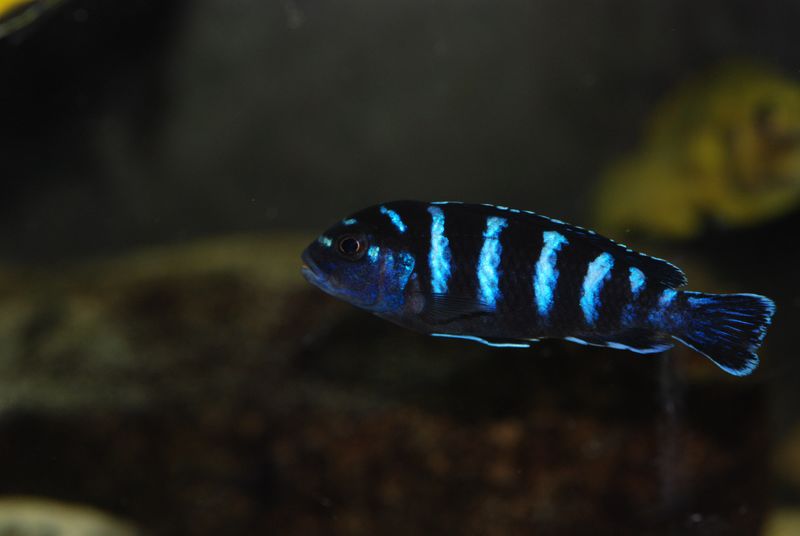
Key Information
While Demasoni Cichlids don’t have distinct variants in terms of coloration or morphology, there’s a richness in their individual characteristics that makes them a fascinating species to keep. Each Demasoni Cichlid can exhibit slightly different patterns and behaviors, adding to the allure of this species. Here’s a detailed table to provide a quick reference guide for their care and requirements:
| Family | Cichlidae |
| Price | Moderate; varies by region and size |
| Common Names | Demasoni Cichlid, Dwarf Mbuna |
| Variants | No recognized variants; uniform blue and black stripes |
| Ideal Tank Size | Minimum 55 gallons; larger preferred for groups |
| Water Parameters | pH: 7.6-8.6, Temperature: 76-82°F (24-28°C), Hardness: 6-10 dGH |
| Lifespan | Up to 10 years with proper care |
| Full Size | Approximately 3-4 inches (7.6-10 cm) |
| Natural Environment | Rocky areas of Lake Malawi, Africa |
| Behavior | Territorial, aggressive, especially towards same species males |
| Habitat Preference | Prefers rocky environments with plenty of hiding spaces |
| Aquarium Decoration | Rocks, caves, and minimal plants; mimic natural rocky habitat |
| Ideal Tank Mates | Peaceful fish that occupy different levels; larger non-aggressive Mbunas |
| Fish to Avoid | Small, timid fish; other Demasoni males; overly aggressive species |
| Best Foods/Diet | High-quality cichlid pellets, vegetable-based foods, occasional meaty foods |
| Disease | Susceptible to common cichlid ailments like Ich and Malawi Bloat |
| Sex-Switch | Not common; generally stable in gender |
| Gender Differences | Males are more colorful; females and juveniles less vibrant |
| Care Level | Intermediate due to aggression management and dietary needs |
| Breeding Level | Moderate; mouthbrooding species, maternal care of eggs and fry |
Ideal Tank Mates
The Demasoni Cichlid, with its vibrant appearance and dynamic behavior, is a popular choice for many aquarists. However, their territorial nature and specific care requirements can make choosing compatible tank mates a bit of a challenge. The key is to select fish that can either hold their own against the Demasoni’s assertiveness or peacefully coexist by using different areas of the tank. Here are 15 ideal tank mates for the Demasoni Cichlid, each chosen for their compatibility:
Yellow Lab Cichlid (Labidochromis caeruleus)
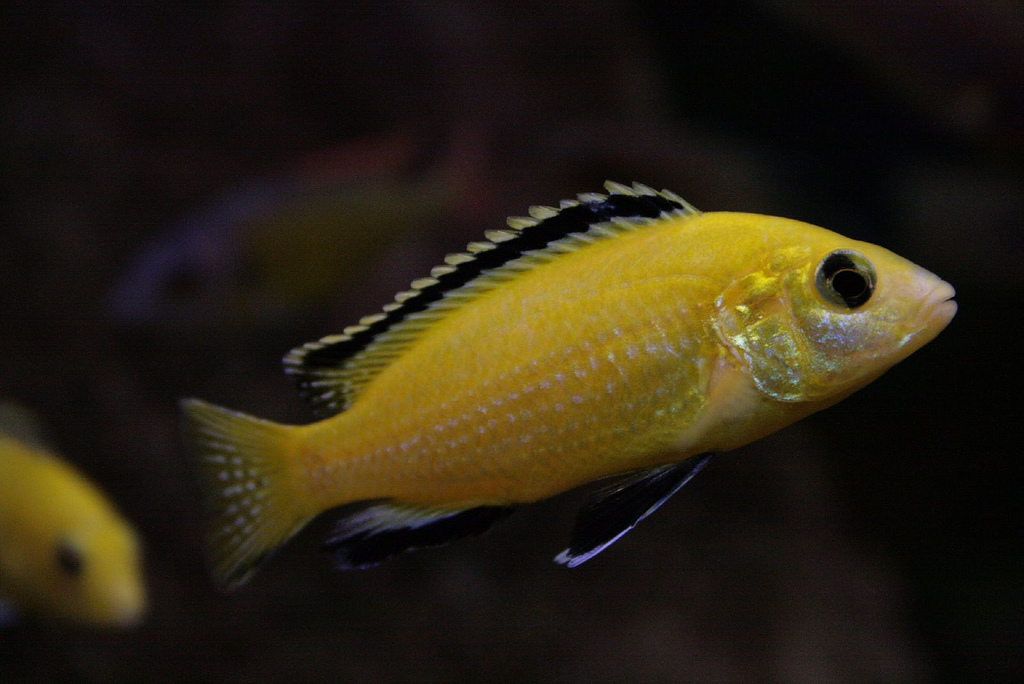
These peaceful cichlids are a great match for Demasoni Cichlids due to their similar size and temperament. They also occupy different areas of the tank, reducing competition.
Maingano Cichlid (Melanochromis cyaneorhabdos)
Mainganos share a similar diet and environmental needs with Demasonis, making them a compatible choice. Their robust nature allows them to coexist without being bullied.
Acei Cichlid (Pseudotropheus acei)
Acei Cichlids are known for their peaceful nature and ability to dwell in the upper parts of the tank, away from the Demasoni’s territory.
Red Zebra Cichlid (Metriaclima estherae)
Red Zebras are hardy and can hold their own against the territorial nature of Demasonis. They also add a splash of contrasting color to the tank.
Rusty Cichlid (Iodotropheus sprengerae)
These cichlids are relatively peaceful and can live harmoniously with Demasonis. They are adaptable and resilient, making them great tank mates.
Electric Blue Johanni (Melanochromis johannii)
Their striking blue coloration complements the Demasoni’s appearance. They are also assertive enough to coexist without conflict.
Clown Loach (Chromobotia macracanthus)
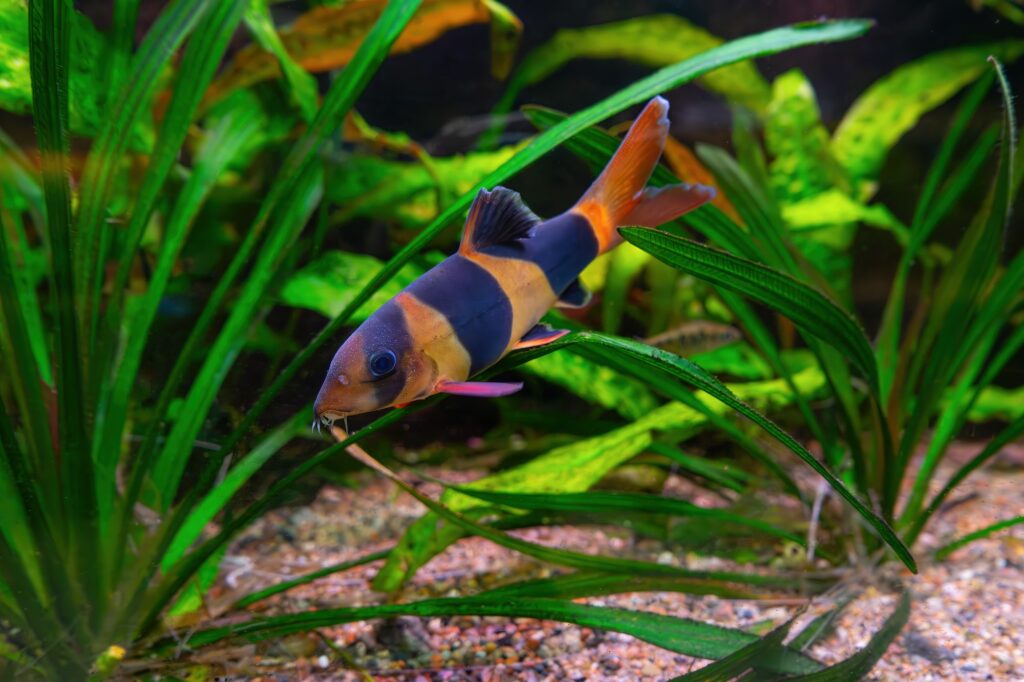
Clown Loaches are peaceful and dwell mostly at the bottom of the tank, avoiding direct conflict with Demasonis Cichlids.
Plecostomus
These algae eaters are great for keeping the tank clean. They are not aggressive and usually keep to themselves, making them suitable companions.
African Red-Eyed Tetra (Arnoldichthys spilopterus)
These tetras are larger and more robust than most, allowing them to share a tank with Demasonis without being intimidated.
Synodontis Catfish
African Synodontis Catfish are excellent bottom dwellers that coexist well with Demasoni Cichlids. They are nocturnal and avoid direct competition.
Giant Danio (Devario aequipinnatus)
Giant Danios are fast swimmers and occupy the upper levels of the tank, staying out of the Demasoni’s way.
Rainbowfish (Melanotaeniidae)
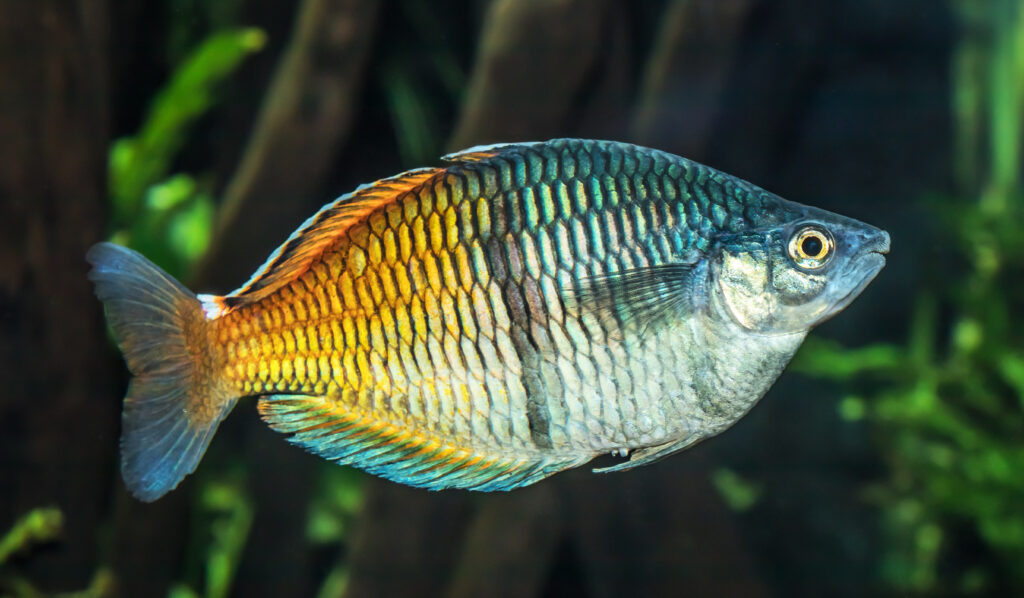
Rainbowfish are peaceful and swift, able to avoid conflicts with Demasonis. They add a variety of colors to the aquarium.
Bristlenose Pleco (Ancistrus sp.)
Bristlenose Plecos are excellent algae cleaners and keep to themselves, avoiding the more aggressive Demasonis.
Cherry Barb (Puntius titteya)
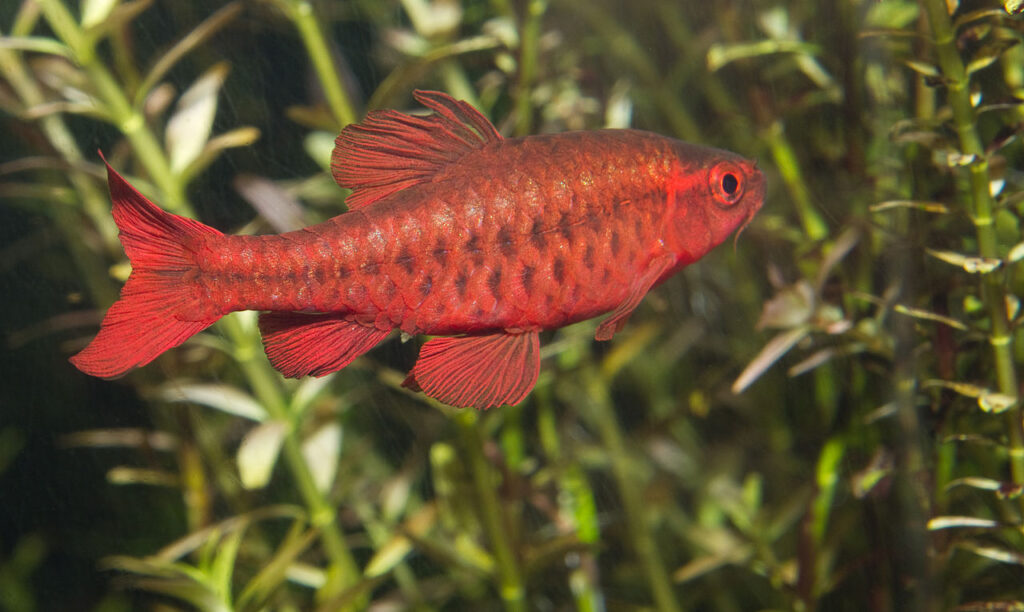
These small and peaceful fish are quick and agile, capable of staying clear of the more territorial Demasoni Cichlids.
Gourami (Trichogaster sp.)
Gouramis are generally peaceful and can inhabit the higher strata of the aquarium, away from the Demasoni’s preferred territory.
When selecting tank mates for Demasoni Cichlids, it’s essential to consider the size, temperament, and environmental needs of each species. A well-thought-out community tank can provide a harmonious and visually stunning aquatic display.
FAQs
How Many Demasoni Cichlids Should Be Kept Together?
It’s recommended to keep a group of at least 6-10 Demasoni Cichlids to distribute aggression and prevent any single fish from being constantly targeted. Larger groups can dilute aggressive behavior.
Can Demasoni Cichlids Be Kept in a Community Tank?
While they can be kept in a community tank, it’s crucial to choose tank mates carefully. Fish that are too small or timid might be bullied. Ensure the tank is large enough to provide adequate space for all species.
How Often Should Demasoni Cichlids Be Fed?
Feed them 2-3 times a day in small amounts that they can consume within a few minutes. Overfeeding can lead to health problems like Malawi Bloat.
What Are the Signs of Stress in Demasoni Cichlids?
Signs of stress include loss of color, hiding more than usual, not eating, or rubbing against tank objects (which could also indicate disease).
How to Breed Demasoni Cichlids?
Breeding Demasoni Cichlids requires setting up a breeding tank with optimal water conditions. A female will lay eggs and pick them up in her mouth, where fertilization occurs. Provide plenty of hiding spaces for the female during this time.
What Is the Ideal Water Flow in a Demasoni Cichlid Tank?
A moderate to high water flow mimics their natural habitat in Lake Malawi and helps keep the water oxygenated and clean.
How Can I Tell If My Demasoni Cichlids Are Happy and Healthy?
Happy and healthy Demasoni Cichlids will display vibrant colors, show active swimming behavior, have a good appetite, and interact with their environment and tank mates.
Are Demasoni Cichlids Prone to Any Specific Diseases?
Like many cichlids, they can be prone to Malawi Bloat, a type of fish bloat, and common freshwater diseases like Ich if water conditions are not optimal.
What Is the Best Substrate for a Demasoni Cichlid Tank?
A sandy substrate is ideal as it closely mimics their natural habitat and allows for the development of beneficial bacteria.